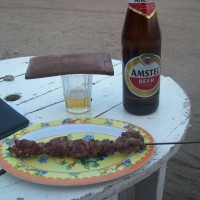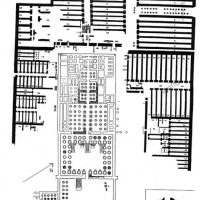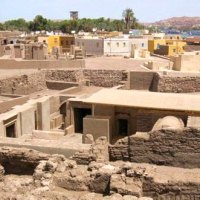With over 30 volumes published, Sir Richard Burton was by far the most prolific of colonial explorers-writers. As well, he was a skilled linguist said to be fluent in over 10 languages. A keen observer of flora and fauna, as well as of the societies that he visited, his works contain some of the most detailed information from the period.
The following, taken from vol. i of Two Trips to Gorilla Land, provide interesting information on indigenous and introduced fruits, and of a relish made from an indigenous mango that was preserved and used throughout the year with both meat and vegetable dishes. Burton likens it to a Worcester sauce; it sounds delicious.

A woman and child of the Mpongwe clan, Gaboon River West Africa. Source: Burton - Two Trips to Gorilla Land. 1851

A woman and child of the Mpongwe clan, Gaboon River West Africa. Source: Burton - Two Trips to Gorilla Land. 1851
Chapter VI. Village Life in Pongo-land.
The common fruits are limes and oranges, mangoes, papaws, and pineapples, the gift of the New World, now run wild, and appreciated chiefly by apes. The forest, however, supplies a multitude of wild growths, which seem to distinguish this section of the coast, and which are eaten with relish by the people.
Amongst them are the Sángo and Nefu, with pleasant acid berries; the Ntábá, described as a red grape, which will presently make wine; the olive-like Azyigo (Ozigo?); the filbert-like Kula, the “koola-nut” of M. du Chaillu (“Second Expedition,” chap, viii.), a hard-shelled nux, not to be confounded with the soft-shelled kola (Sterculia); and the Aba, or wild mango (Mango Gabonensis), a pale yellow pome, small, and tasting painfully of turpentine.
It [the wild mango] is chiefly prized for its kernels. In February and March all repair to the bush for their mango-vendange, eat the fruit, and collect the stones: the insides, after being sun-dried, are roasted like coffee in a neptune, or in an earthern pot. When burnt chocolate colour, they are pounded to the consistency of thick honey, poured into a mould, a basket lined with banana leaves, and set for three days to dry in the sun: after this the cake, which in appearance resembles guava cheese, will keep through the year.
For use the loaf is scraped, and a sufficiency is added to the half-boiled or stewed flesh, the two being then cooked together: it is equally prized in meat broths, or with fish, dry and fresh; and it is the favoured kitchen for rice and the insipid banana.
“Odika,” the “Ndika” of the Bákele tribes, is universally used, like our “Worcester,” and it may be called the one sauce of Gorilla-land, the local equivalent for curry, pepper-pot, or palm-oil chop; it can be eaten thick or thin, according to taste, but it must always be as hot as possible. The mould sells for half a dollar at the factories, and many are exported to adulterate chocolate and cocoa, which it resembles in smell and oily flavour.
I regret to say that travellers have treated this national relish disrespectfully, as continentals do our “plomb-boudin:” Mr. W. Winwood Reade has chaffed it, and another Briton has compared it with “greaves.”


























Pingback: Agriculture; Livestock; Indigenous Plants; Agroforestry – Links | DIANABUJA'S BLOG: Africa, the Middle East, Agriculture, History & Culture
Pingback: Eating Weeds and Insects « Dianabuja's Blog
Pingback: Colonial Musings on Cameroon Mountain: Out with the Plantains! In with the Coffee & Sugar! « Dianabuja's Blog
Actually, no. The papers apparently covered a number of topics pertaining to sexuality in various cultures, among other things, from what I recall.
LikeLike
Somewhere I have a 2-page copy of his description of female circumcision as practiced in Harar (or the vicinity). It is written in Latin… and appears as one of the Appendices of “First Footsteps in East Africa”, but the entry is not contained in the printed editions.
LikeLike
Pingback: More about Wild Mango Relish from West Africa « Dianabuja's Blog
His wife, Isabella, burned a huge number of his papers after his death …
LikeLike
OH! Hopefully, they were ‘only’ love letters!?
LikeLike